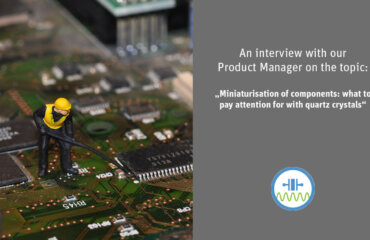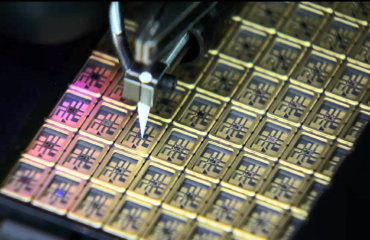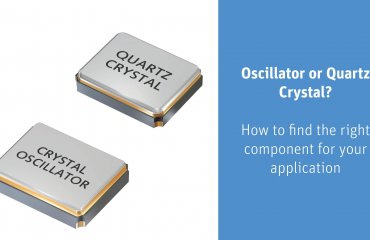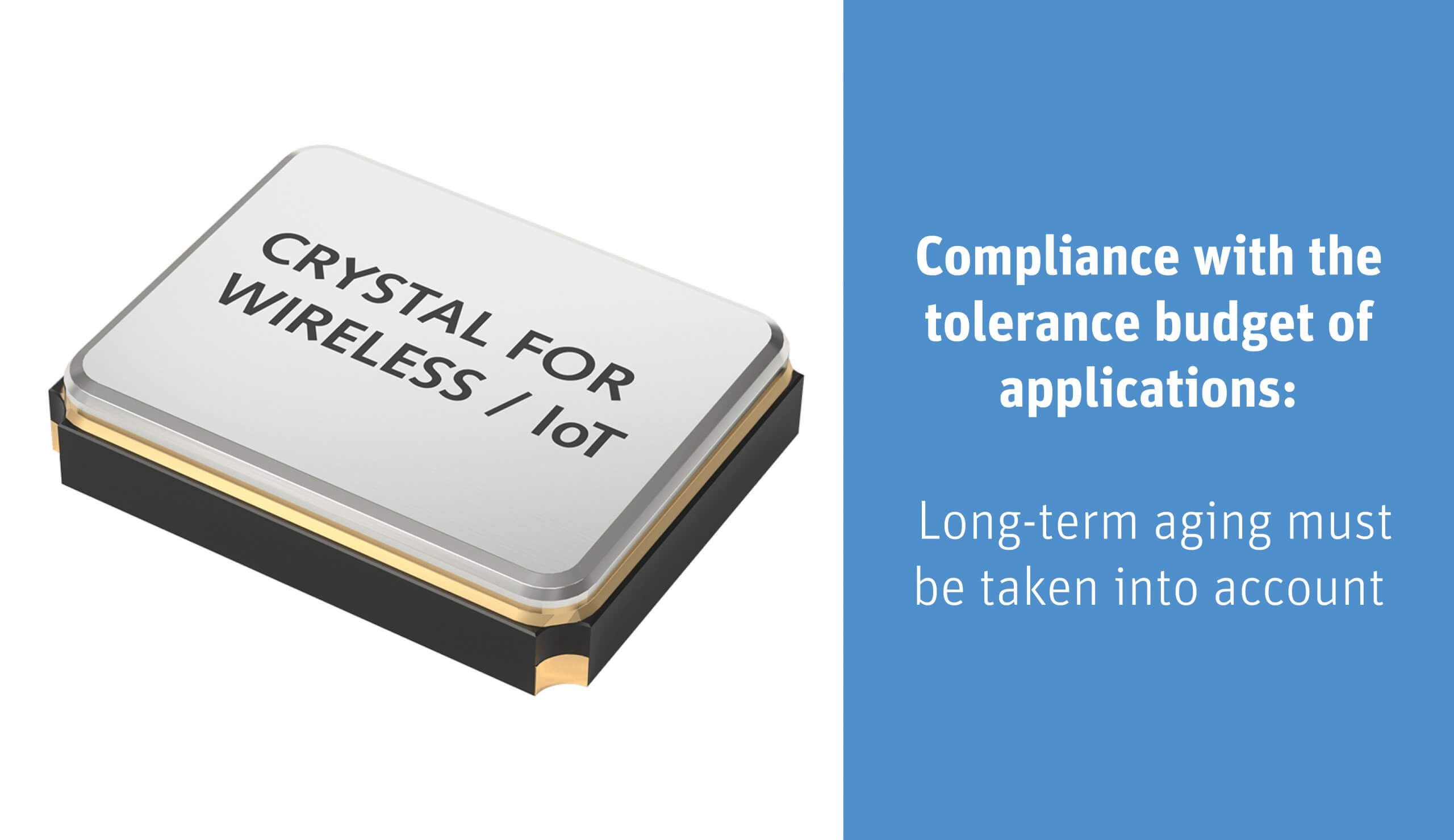
Each application has a tolerance budget in terms of frequency deviation that must be adhered to even in the worst case scenario in order to ensure that the application functions. Developers must therefore be aware of all factors that can lead to frequency deviations. The sum of all worst-case scenarios of these factors must not exceed the limits of the application.
Possible causes of frequency deviations of a quartz resonance frequency are:
- Frequency tolerance at 25°C
- Frequency stability over temperature
- Long-term aging
- Mismatch of the circuit’s CL
- CL error due to load capacitor tolerance
The developer must compare the sum of these deviations with his application’s tolerance budget and take any necessary corrective action.
Long-term aging factor
The long-term change in the resonant frequency of an oscillating crystal is called aging.
Aging processes take place in every component. Although the quartz crystals are dried in a complex process before final adjustment and sealing, and then sealed under inert gas, minute amounts of the solvents in the conductive adhesive and minute amounts of oxygen remain in the component, where they react over the long term. This reaction leads to a permanent frequency change on the quartz, which is called long-term aging.
The developer must take this frequency change over the lifetime of the application into account when calculating the tolerance budget. The usual long-term aging rate for standard quartz is up to +/-20ppm in the first ten years in individual cases. This is a saturation process that intensifies at higher temperatures and thus takes effect earlier.
Pre-aging for improved overall performance
Many applications require high frequency accuracy. For such applications (LAN, Wi-Fi, Bluetooth, etc.), severe long-term aging is not acceptable. That is why Jauch has developed special quartz crystals that have been optimized specifically for such applications. Along with many other improvements, these WA (wireless application) crystals are artificially pre-aged during production by intermediate storage in temperature chambers, thus greatly reducing aging to a maximum of +/-7ppm over 10 years in the application.
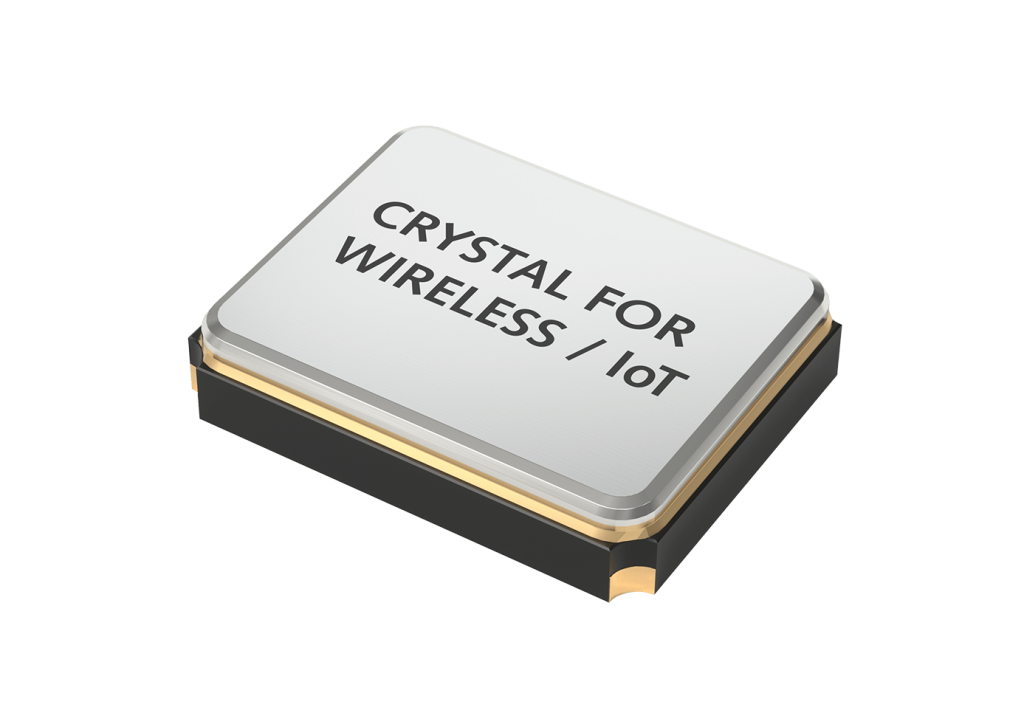
By using such WA crystals from Jauch, the developer can avoid problems caused by severe long-term aging in his application in advance. The devices are thus very well suited (along with a number of other optimizations) for use in wireless and networking applications that require a smaller tolerance budget.
Click here to get more information about the Crystals for Wireless and IoT.


 Deutsch
Deutsch 

